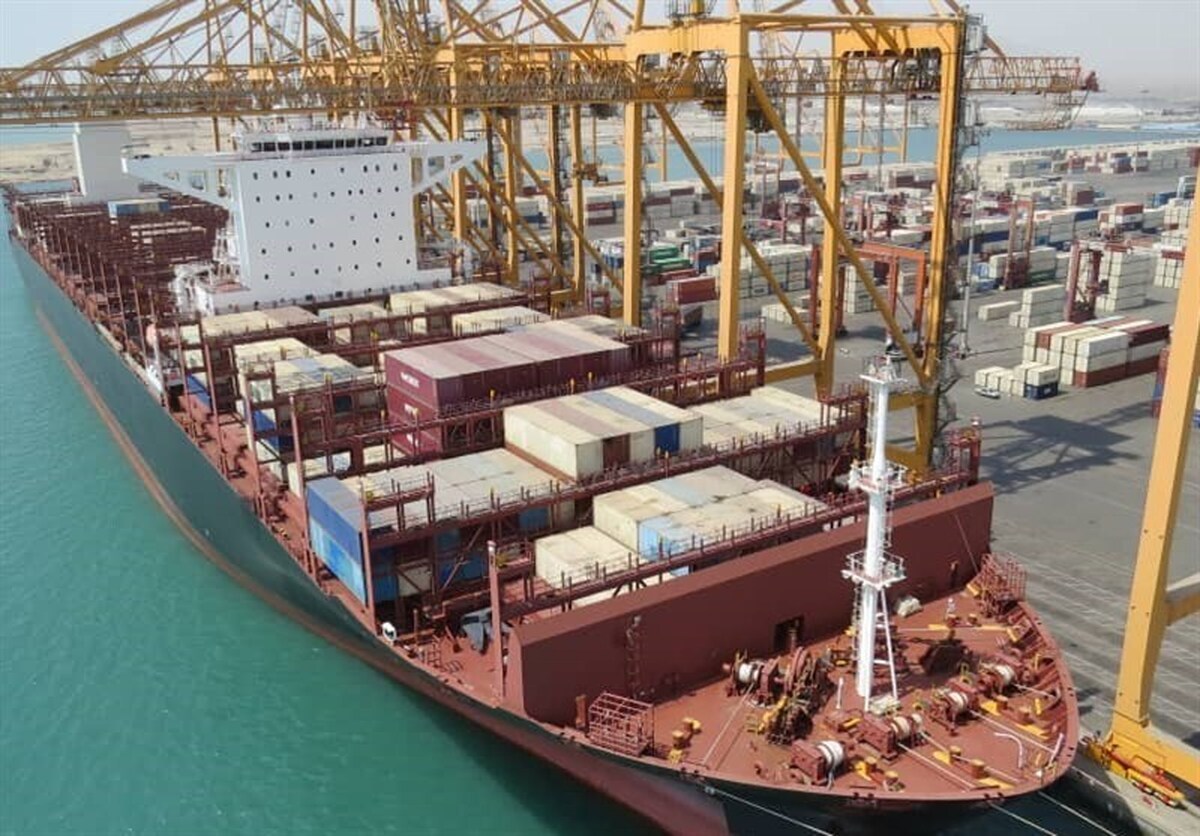
New Port With Annual Capacity of 150m Tons Planned
EghtesadOnline: The Ports and Maritime Organization is planning to build a new port on the east coast of the Strait of Hormuz, which will have a loading and unloading capacity of 150 million tons of commodities per year once all phases have been completed, according to the head of PMO.
“This new port will be built in Kangan Rural District’s Kuh Mobarak area, Jask County of Hormozgan Province, and in the vicinity of the oil terminals owned by Iran’s Oil Ministry. At the current rate, the project will cost around 100 trillion rials [$358.67 million],” Mohammad Rastad was also quoted as saying by Fars News Agency.
The official noted that the project’s construction is scheduled to begin in the fiscal 2025-26 and the first phase is estimated to be completed by 2032-33.
“The plan is for the whole project to be launched by the fiscal 2045-46,” he added.
The government has come up with a strategic plan for the development of Makran, a stretch of coast southeast of Iran emerging as a major naval base and commercial hub of maritime trade, setting guidelines to achieve sustainable development of the region and benefit its indigenous people while lowering social and environmental damage, as the area boasts a wide range of investment opportunities.
“A working group led by First Vice President Es’haq Jahangiri approved the Special Plan for Development of Makran Region on Dec. 26, 2016, after the Ministry of Roads and Urban Development spent about two years for its preparation,” Zohreh Davoudpour, director general of the ministry’s special office for new projects, told Financial Tribune last year.
The plan is focused on “development of the underprivileged region in line with its existing opportunities and potentials”, she said.
The official said the guidelines provide a list of locations whose development would entail minimum environmental and social consequences and maximum economic benefit for the residents of Makran Coast.
“The new port will be Iran's second oceanic port after Chabahar in the southeastern province of Sistan-Baluchestan and accommodate larger vessels,” Rastad said in August.
The official noted that the organization is mostly focused on building a container port with a capacity of handling the region’s throughput without reducing the share of other ports like Chabahar or Shahid Rajaee.
The facility could also be designed to simultaneously handle wholesale cargos and essential goods.
“We want the port to have easy and quick access to different transportation modes. With proper access to rail and road routes, the envisaged port could turn into the region’s transit and transshipment hub,” Rastad said.
The PMO chief executive also Iran’s port throughput capacity currently stands at 246 million tons.
“Some 90% of Iran's exports and imports are carried out through ports in the south and north with a respective capacity of 216 million tons and 30 million tons,” he said.
Latest data show Iran’s 21 major commercial ports handled a total of 58.44 million tons of commodities during the first half of the current Iranian year (March 20-Sept. 21) to register a 25.4% decline compared with the similar period of last year.
According to figures published by PMO, non-oil goods accounted for close to 36.82 million tons of the total throughput, showing a 32.45% fall year-on-year.
The remaining 21.62 million tons pertained to oil products, indicating a 9.29% decline YOY.
Container loading and unloading decreased by 39.31% to stand at 640,604 TEUs.
The 21 ports under study include Iran’s southern ports of Abadan, Imam Khomeini, Bushehr, Khorramshahr, Genaveh, Bandar Lengeh, Chavibdeh, Arvandkenar, Charak and Dayyer located on the shores of the Persian Gulf, Shahid Rajaee, Shahid Bahonar, Qeshm and Tiab at the mouth of the Strait of Hormuz, Jask and Chabahar on the coasts of the Sea of Oman and the northern ports of Fereydounkenar, Noshahr, Astara, Amirabad and Anzali on the Caspian Sea shoreline.
A total of 25.55 million tons of commodities were exported from these ports and over 14.73 million tons were imported, registering a 30.53% and 8.42% decline respectively YOY.
More than 1.58 million tons of goods were transited through these ports during the same period, indicating a 35.37% decrease compared with the corresponding period of last year.



